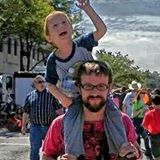All things are connected and impermanent.
The world is a reflection of the mind and the Ch’an method is nothing other than an intuitive understanding of these facts. There is nothing else to it.
The mind realizes its own essence and in this way no longer perceives itself and the outer world as two separate and unconnected realities.
Ch’an masters of ancient times told their students to “lay it all down” and “have no concern for the world.” There are many stories of people becoming enlightened only from hearing a word or seeing an action at an appropriate moment, usually delivered by a master. But much of this activity is the result of a long-term meditation practice in which the practitioner has spent time building up their inner potential.
Experiences of awakening, the dropping away of body and mind, can occur during meditation, but it can also occur during ordinary life. In any case, this cannot happen without some cultivation of the ordinary mind.
The Ch’an method of awakening doesn’t engage the ordinary, intellectual, conscious flow of our minds. As our minds are deluded, delusions would get in the way. Instead, the Ch’an method seeks to engage the empty “mind ground” directly. All of our perceptions and thought patterns are products of the ordinary state of mind and we are seeking to disengage from them.
We are, instead, turning our gaze firmly within, away from externals, so that the essence of our true nature can be realized and integrated with, challenging our perception of duality and attaining realization that all things exist in a deep emptiness.
A Ch’an practitioner is considered a spiritual warrior who declares a firm intention to transcend our deluded nature now.
Seated meditation is an important practice that can be done anywhere.
A seated physical posture must be chosen that can be held for around 25 minutes. We must declare our dedicated intention to transcend both time and space. The illusion of time and space manifests in our minds as boredom and agitation. We must overcome these.
The practicioner must set the mind upon its true nature and not get distracted by anything while in the act of meditation. Over time, the spiritual sense of detachment spreads from existing during meditation to existing more and more often.
The body must sit on the floor in a way that is straight and upright. The legs should be arranged in a folded manner. The spine should be straight and the shoulders should not slump. The face should be relaxed and the eyes should be gently closed. The left hand should lie on top of the right hand in the lap, with the tips of each thumb touching. This posture is said to allow energy to flow without being hindered.
Breathing should be deep, with each breath entering and leaving through the nose.
Posture and position are used to guide us through the gate on our spiritual journey. Once the gate is entered, the meditation method is used to deliver us to our true nature.
At the beginning concentration is probably weak, but practice will strengthen it. The mind must be taught how to focus on a single point. This point, when turned inward, digs through our delusion. The simplest way this can be developed is by the practice of following the breath.
Inward and outward breathing must be followed in every moment and an awareness develops. The breath itself emerges and disappears but with practice we develop a perception of the spaces in between. Concentrating the mind on the breath focuses it inward, toward its own true nature.
The truth is our true nature is always present, but we can’t see it. So, this method removes the false barrier created by our delusion so that the emptiness that contains all things can be glimpsed.
Sometimes reliance on the breath is not always powerful enough. In ancient times, meditators would practice for a long time, but only meeting an enlightened master who could give some kind of demonstration or teaching could enlighten them. That said, the student must always have the potential built up. The teacher is only pointing at what is already there. Preparatory meditation was always essential to working with a teacher.
Ch’an practitioners can use many different meditation methods. Master Xu Yun used the hua tou method, which is asking yourself over and over, “who am I?”
Some people like to meditate staring at a complicated mandala. And some like to chant, either vocally or in their minds. The outward form isn’t that important, although I have found following the breath to be the most effective method for me.
What’s important is that we should be disciplined and gather the mind to a focus so that effort can be applied with unceasing determination.
Love elephant and want to go steady?
Sign up for our (curated) daily and weekly newsletters!
Author: Daniel Scharpenburg
Editor: Catherine Monkman
Photo: Betty Nudler/Flickr












Read 0 comments and reply